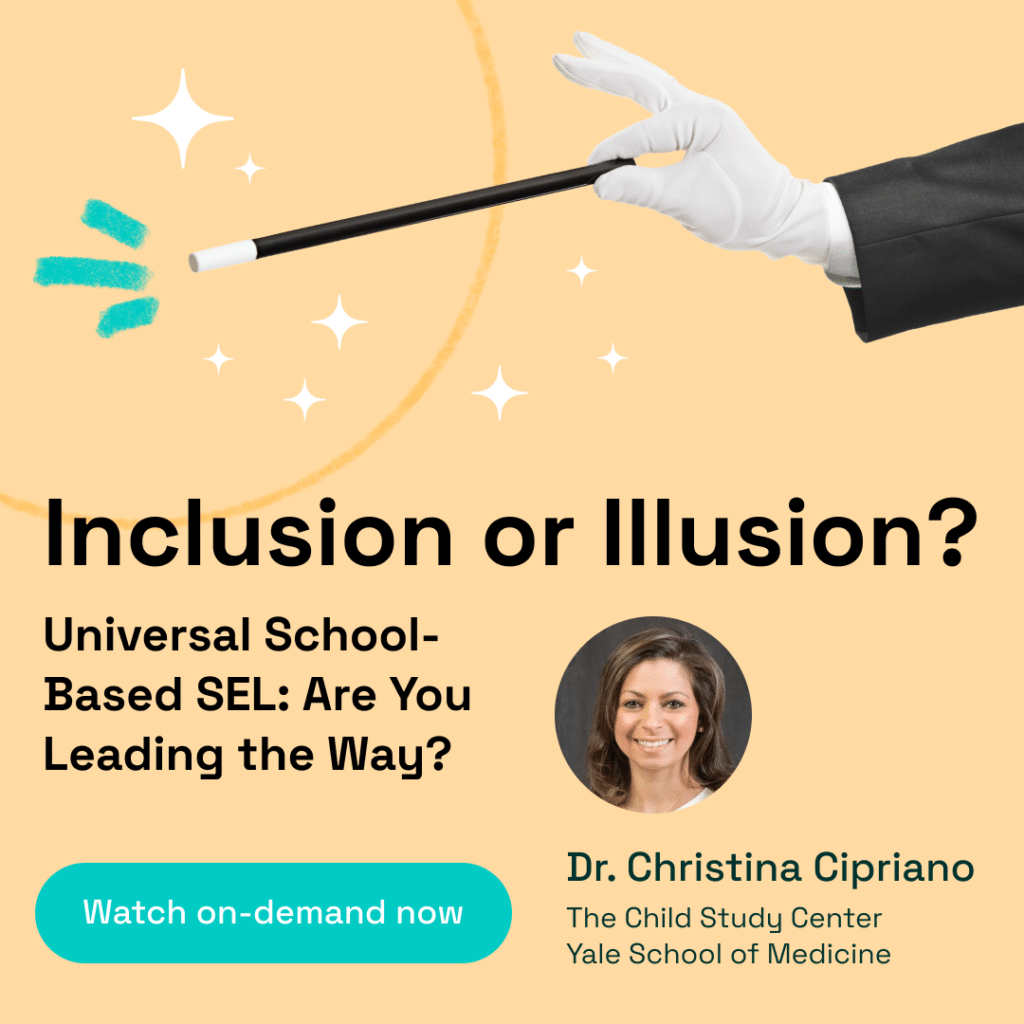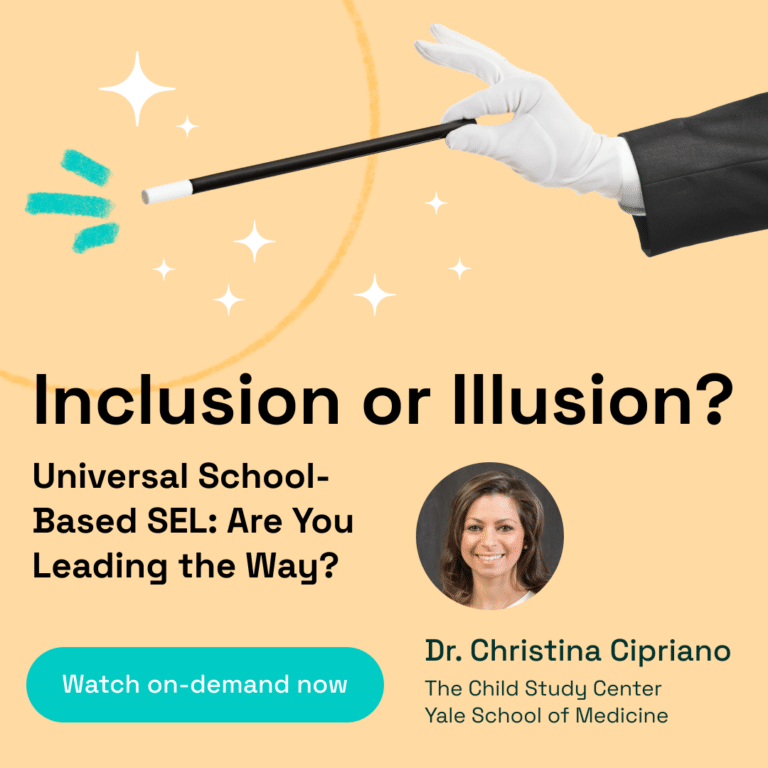Students today are growing up in a world that is fast-paced, highly connected, and filled with unique challenges. From a young age, they are exposed to the pressures of academic performance, social media, and the expectations of an increasingly competitive global economy. This environment can often feel overwhelming, leading to heightened stress, anxiety, and social comparison. Balancing these pressures while maintaining academic and personal well-being is no easy task and requires effective social emotional learning strategies
In this context, emotional understanding is more important than ever. Students need to develop resilience, emotional regulation, and empathy to navigate their relationships, manage stress, and stay focused on their goals. Social and emotional learning (SEL) is a proven way to boost student engagement and foster both academic and emotional growth. But how can teachers effectively implement SEL strategies in their classrooms? What are the key factors that make SEL programs successful, and how can schools ensure long-term impact?
In this article, we’ll answer these questions and more. We’ll explore social emotional learning strategies that educators can use to enhance classroom engagement, from fostering better communication skills to promoting mindfulness. You’ll also learn about the critical role of teacher well-being in SEL success, and how integrating SEL into daily routines can create lasting benefits.
Social Emotional Learning Program Effectiveness: Data and Outcomes
Social-emotional learning (SEL) programs have demonstrated clear benefits across both academic success and behavioral outcomes. Studies show that well-implemented SEL strategies improve students’ performance in key academic areas like reading, math, and science. On the behavioral side, SEL programs have been linked to reductions in disruptive behavior and emotional distress, while fostering positive social interactions and school engagement.
These improvements aren’t just short-term. Meta-analyses reveal that the effects of SEL interventions are sustained over time, with follow-up studies confirming long-lasting benefits in both academic achievement and emotional well-being. Furthermore, SEL’s impact appears to be consistent across diverse student groups, irrespective of race, socioeconomic background, or location.
Although many schools have started using SEL programs to help students build social and emotional skills, these programs are not always effectively implemented. According to research the success of SEL programs, tend to ensures students actively engage with and practice social-emotional skills.
In short, when SEL is integrated properly, it leads to meaningful improvements in both academic outcomes and students’ overall well-being, making it a powerful tool for educators.
Core Components of Effective Social Emotional Learning Strategies
SEL programs that work well usually follow a few core principles. The most effective programs are structured around the SAFE framework: they are sequenced, active, focused, and explicit.
- Sequenced means activities are carefully ordered to build skills over time.
- Active learning, where students practice skills rather than just hearing about them, is key.
- Focused programs concentrate specifically on developing personal and social skills, and explicit programs clearly define and teach those skills.
- Effective SEL programs also emphasize the development of active listening skills, which are crucial for effective communication and interpersonal development.
Therefore, critical part of making SEL work is training teachers. Successful implementation hinges on whether teachers know how to integrate SEL into their everyday instruction. Ongoing training and mentoring are essential for keeping teachers engaged and ensuring that they can deliver SEL content effectively. Without adequate support, even the best-designed programs can fall flat. That’s why incorporating collaborative learning activities can enhance relationship skills, helping students build and maintain healthy relationships through teamwork and social-emotional learning.
Additionally, research highlights the importance of teachers’ own social-emotional skills. Teachers who manage their own stress and emotions well are more effective in promoting a healthy, supportive classroom environment. Therefore, programs that prioritize teacher well-being have effectively reduced burnout and improved classroom outcomes. That’s why practical social emotional learning strategies to enhance self-management, such as journaling and practicing mindfulness, are also integral to effective SEL programs. Ultimately, the best SEL strategies are those that actively engage both students and teachers in the learning process.

- Understanding Equitable SEL: Discover what equitable and inclusive SEL really means and why it matters.
- Expert Insights: Learn from Dr. Christina Cipriano, a preeminent expert with extensive research in SEL, about effective strategies.
- Actionable Steps: Gain knowledge about immediate actions to ensure your SEL programs are inclusive and beneficial to every student.
- Innovative Approaches: Explore skills-based, justice-focused, and adult SEL strategies that can transform your school or district.

Long-Term and Systemic Impacts of SEL
The benefits of social-emotional learning (SEL) go beyond short-term academic gains. SEL programs also foster positive relationships, enabling students to create and maintain beneficial connections with others. Studies show that SEL programs can have long-lasting effects, both academically and emotionally. Because, students who go through well-structured SEL programs continue to show improvements in their emotional regulation and social interactions long after the programs end. This lasting impact makes SEL a strong investment for schools looking to foster not only academic achievement but also well-being over time.
System-wide integration of SEL is critical for maximizing its effects. When SEL is embedded into the fabric of a school—rather than treated as a stand-alone program—it has a much broader impact. Schools that fully integrate SEL into daily routines and the overall school climate see more significant and sustained improvements in both student behavior and academic outcomes. Integrating SEL into the school fabric promotes social and emotional development, helping students grow emotionally and socially over time.
Another key to long-term success is aligning SEL with academic learning. When SEL is woven into the curriculum, it improves students’ engagement and helps them master academic content more effectively. Overall, SEL works best when it’s not just an add-on, but part of a school’s core mission. This systemic approach makes the positive effects of SEL programs more likely to stick.
Global Perspectives and Cultural Adaptation
While much of the research on SEL originates from Western contexts, there’s growing interest in how these strategies apply globally. In countries like Korea, SEL programs have been adapted successfully, showing positive results in improving social-emotional skills and academic attitudes among students. That means programs that emphasize social awareness help students develop empathy and responsible decision-making skills, which are crucial in diverse cultural contexts. These programs, tailored to fit local cultural values, highlight the flexibility of SEL and its potential for worldwide implementation.
Cultural adaptation is key. SEL programs need to align with the educational goals and social norms of each region to be effective. What works in the U.S. or Europe may not automatically succeed elsewhere without adjustments. For instance, in Korea, SEL has been integrated into ethics education, and researchers have developed curricula that blend SEL with core subjects like math and social studies.
Internationally, SEL plays a significant role in promoting inclusive education, especially in developing countries. Social emotional learning strategies help address issues like inequality in education by improving school environments and providing marginalized students—such as girls or children with disabilities—the skills to succeed. This global application of SEL also ties into broader educational goals, such as the United Nations’ Sustainable Development Goal 4, which aims for inclusive and equitable education for all.
Challenges and Considerations in SEL Implementation
Despite the proven benefits of SEL, there are common barriers to effective implementation. One of the biggest issues is inadequate training and support for teachers. Many schools adopt SEL programs without offering sufficient professional development, which leaves educators underprepared to integrate SEL into their classrooms effectively. Without the right training and ongoing coaching, even the most well-designed SEL programs can struggle to gain traction.
Regular check-ins between educators and students can provide crucial insights into students’ mental health, fostering a supportive environment that enhances both academic performance and overall well-being.
Another challenge is a lack of systemic support. Successful SEL implementation requires strong backing from school leadership. Principals and administrators need to be involved, understanding the value of SEL and creating a supportive environment for it to thrive. When leadership is disengaged, SEL programs are less likely to be sustained over the long term.
Additionally, there’s a need for continuous assessment. Schools must regularly evaluate the effectiveness of SEL programs by tracking both student outcomes and teacher feedback. This ensures that programs can be adjusted to meet evolving needs and remain relevant over time. In some cases, SEL programs fail to show meaningful results because they aren’t properly tailored to the specific school context or population. Addressing these challenges is crucial for ensuring that SEL programs achieve their full potential.
Social Emotional Learning Strategies That Prepare Students for Success
In conclusion, we can say that Social Emotional Learning (SEL) is a fundamental approach to increase student engagement and promote both academic and personal growth. Well-implemented social emotional learning strategies improve classroom behavior, strengthen social interactions, and encourage higher levels of student participation. By integrating SEL into the daily curriculum, schools help students develop important skills such as self-awareness, emotional regulation, and empathy, creating a supportive and positive learning environment. These benefits extend beyond the classroom, preparing students for long-term success in both their academic journeys and personal lives. Thus, these skills are also highly valued by employers and vital for personal well-being. Incorporating social and emotional learning activities into the curriculum helps students develop essential life skills through engaging and interactive methods.
Ori Learning’s platform is designed to support diverse learners with features like multilingual translation, text-to-speech, and flexible lesson formats. Whether you’re teaching in person, remotely, or in a hybrid setting, Ori’s tools allow to tailor lessons to meet students where they are. Effective social emotional learning strategies should teach kids the validity of all emotions, helping them identify and manage their feelings through methods like emotional reflection exercises and daily journal prompts. With a focus on both SEL and transition skills, Ori Learning’s curriculum ensures that students are ready for the challenges of both school and the world beyond.
To stay ahead and learn how to better prepare your students for the future, subscribe to Ori Learning’s newsletter. You’ll receive expert tips, updates on the latest research, and practical resources to help foster resilience, compassion, and success in every learner. Ready to take the next step? Sign up now and start building a brighter future for your students.
More on Effective Social Emotional Learning Strategies
The 5 C’s are crucial SEL skills: Critical Thinking, Collaboration, Creativity, Communication, and Curiosity. These help students succeed academically and socially.
An SEL strategy is a plan to help students develop social and emotional skills through activities like journaling, mindfulness, and collaborative projects.
Apply SEL by incorporating activities like emotional check-ins, group discussions, and problem-solving exercises to support emotional and social growth.
The 4 pillars are Self-Awareness, Self-Management, Social Awareness, and Responsible Decision-Making, foundational for positive behavior and relationships.





